Affiliate disclosure: This post may contain affiliate links. Please see our Privacy Policy.
Red Blackberries (Rubus pubescens) are a common occurrence in Northern New England. They’ll carpet the ground, largely staying out of sight unless you have your eyes peeled, but in season their bright red fruits make them easy to spot.
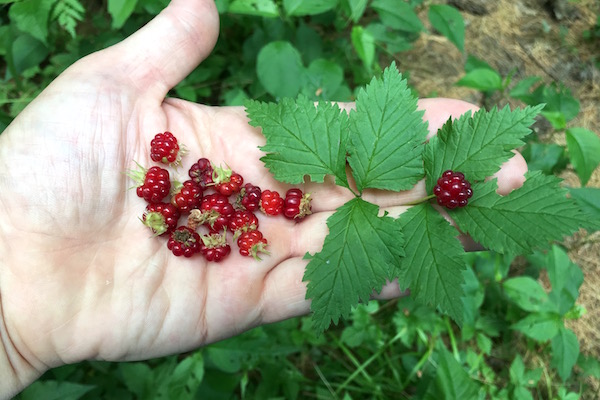
It sounds a little contradictory, doesn’t it? Red blackberries? Well, there are black raspberries, so why not red blackberries?
This is one of the places where common names get a little tricky. Rubus pubescens is just one of literally hundreds of Rubus species with edible fruit, the most notable are blackberries and raspberries.
Watching them ripen on the forest floor, I always assumed that they were just under-ripe fruits of the northern dewberry (Rubus flagellaris) because I never looked that closely at what seemed to be just an under-ripe fruit. Those black dewberries aren’t super tasty, and they’re somewhat dry so I didn’t pay them much attention.
I did think it strange that they always seemed to disappear before I’d see them turn black. That’s, of course, because they never do turn black, and they were perfectly ripe Red Blackberries (Rubus pubescens) all along.
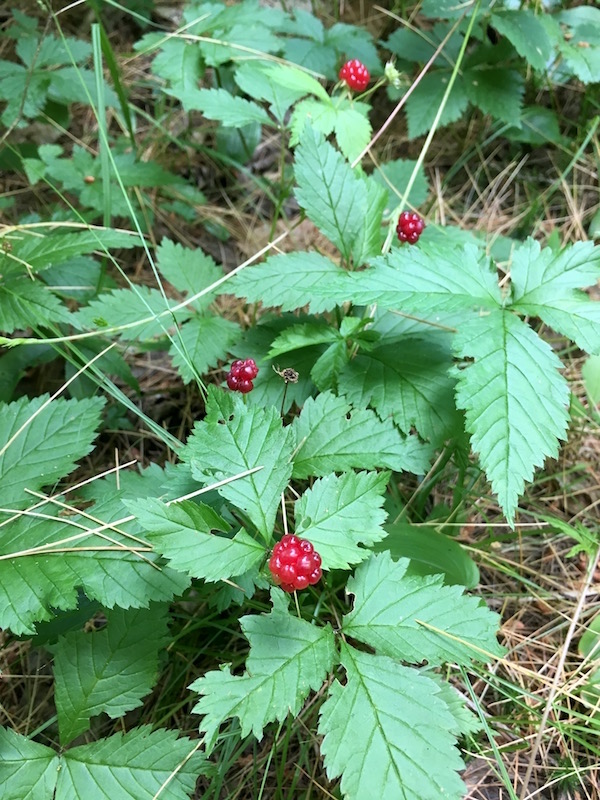
I was flipping through one of my favorite foraging books, Incredible Wild Edibles by Sam Thayer, and I came across a picture of what he calls plumboy berries. They go by a lot of names…plumboy, red blackberry, dwarf red blackberry, dwarf red raspberry or the most confusing…dewberry. Dewberry seems to be the catch-all name for all low-growing raspberry-like or blackberry-like fruits.
There are two nearly identical varieties, the one we have here in the Northern United States (Rubus pubescens) and another more northern species which grows in Canada into the Arctic, which he calls Nagoonberry or arctic raspberry (Rubus acaulis or R. Arcticus).
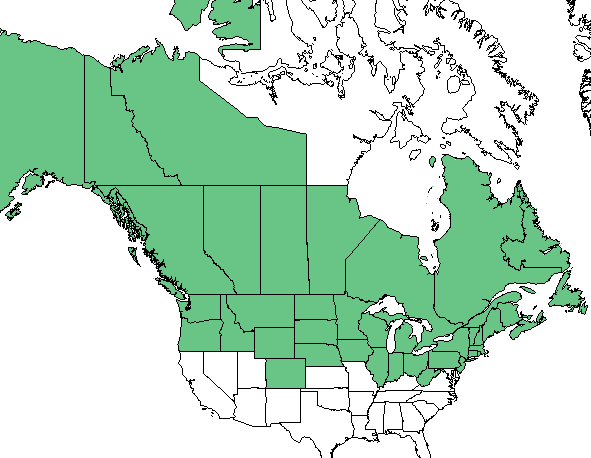
He describes them both as follows:
“Plumboy and nagoonberry are two very similar species that are unarmed, herbaceous, and form colonies by runners. The runners root at the nodes and then form small plants that flower and fruit the following year. Each plant produces only a few flowers or berries. These species are regarded very highly by most who know them — They have a unique, candy-like flavor that is hard to describe…”
I’d been missing out all this time! Next time I spotted these little beauties, which is in mid-July here in Vermont, my kids and I went to work harvesting.
Though they only produce a few berries per plant, mostly one each on the plants we found, they grow in huge colonies. I spent about an hour harvesting them with my 2 and 4-year-old, and I’d imagine we gathered enough to make a pie (but every one of them went right into someone’s mouth).
My two-year-old especially, not known for patience, was pretty upset when it was time to pack up and head home.
Just one more…please just one more…
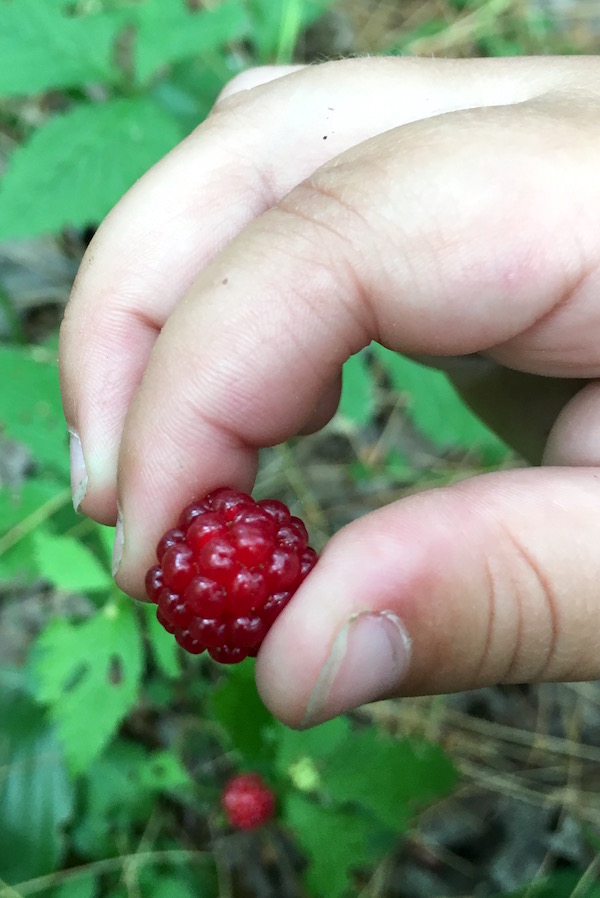
What’s interesting though, is these were growing among so many other rubus species. Right alongside the low-growing red blackberries, I actually found northern dewberries (Rubus flagellaris) just beginning to flower and set fruit.
It was good for me because once you see the plants next to each other, it’s easy enough to mark them in your head and spot the difference later on.
The northern dewberries have more roughly strawberry-shaped rounded leaves, and they’re a bit darker in color. In mid-July here in Central Vermont, I found a few that had just set fruit, but the fruits were still quite small, hard, and green. Most were just flowering.
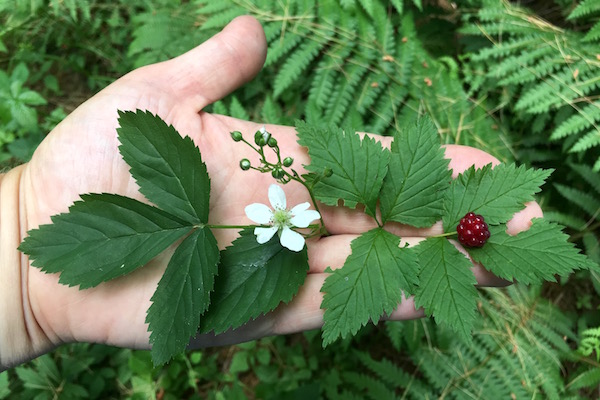
The pine barrens where we found these rubus species were covered in other edible species as well, including carpets of wild blueberries, blackberries, and bunchberries. Likely many others I’ve yet to identify as well. Thus far, every time I’ve seen these low-growing raspberry-like fruits, it’s been under a pine forest, and there have always been wild blueberries nearby.
Coincidence, perhaps, but if you do find them, keep your eyes peeled for other tasty edible wild plants. For now, I’m really happy to have ID’d another rubus species in the field….now there are only 200 or so more to go.
Now, if I could only find salmonberries…there on my foraging bucket list of edible wild plants that I hope to find soon!
Fruit Foraging Guides
Looking for more tasty edible wild fruit?
- Foraging Bunchberries
- Foraging Saskatoons (Serviceberries)
- Foraging Wild Black Cherries
- Foraging Chokecherries
- Foraging Aronia (Black Chokeberry)
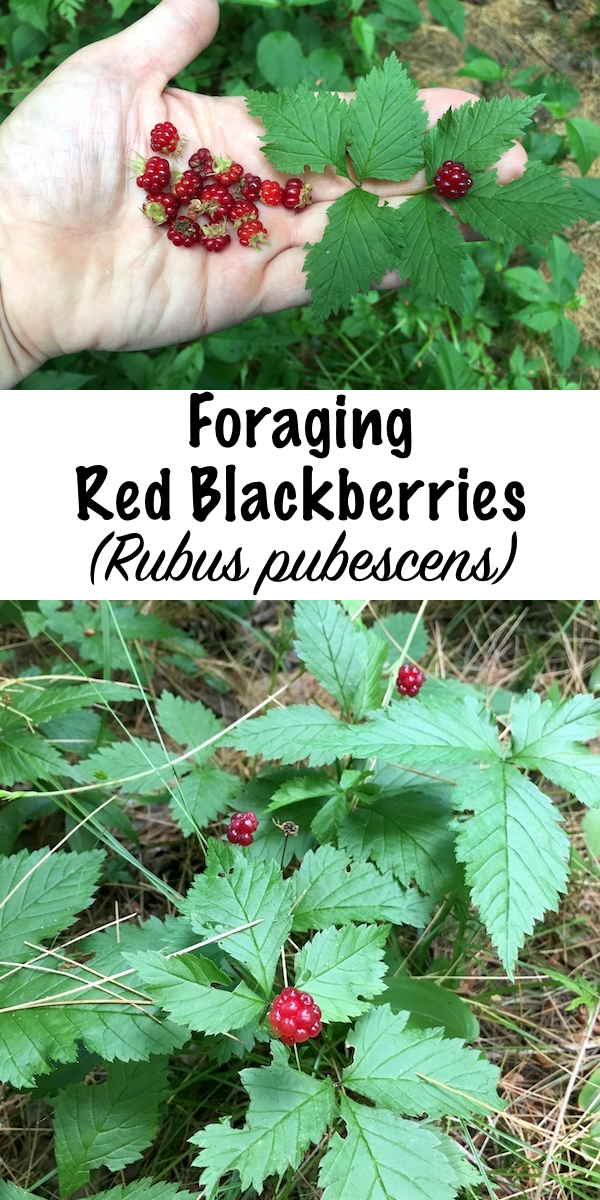














I love salmon berries and they are just ripening here in the Idaho panhandle. On my wonder today, I noted Saskatoon berries, salmon berries, black raspberries, low Oregon grape and cherries ripe. The wild strawberries of last month are done and the black berries and currants won’t be ripe until next month with the plums. Elder flowers are also out to collect some now and return later for the berries.
I love this area for foraging and am propagating a wild orchard at the top of my property to share with the neighborhood.
Ashley, I really enjoyed your article. This morning on my morning walk I took along a pair of garden clippers and trimmed some wild black raspberry canes in the park near the water. There’s also a fair amount of undergrowth and branches they have to compete with so I cut some of that back also. Last year I harvested 3 1/2 lbs of berries to make jelly. A couple more sessions of trimming and with any luck this year’s harvest should be doubled since quite a few of the shoots tip layered last year and I snipped out sections to let those produce also.
We live in a big city but do have a good size garden, cook from scratch, do preserves and foraging also.